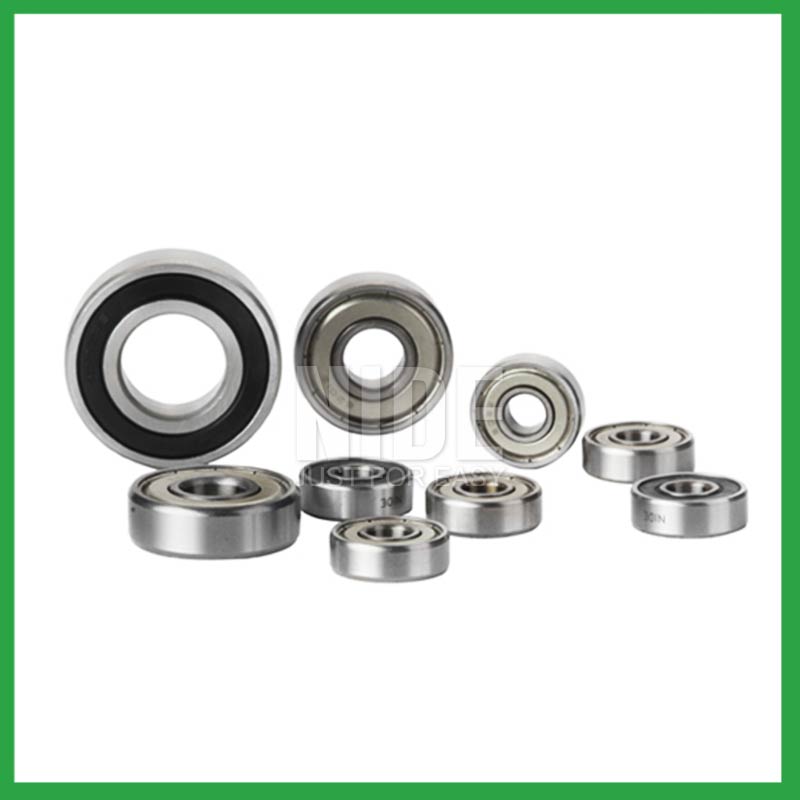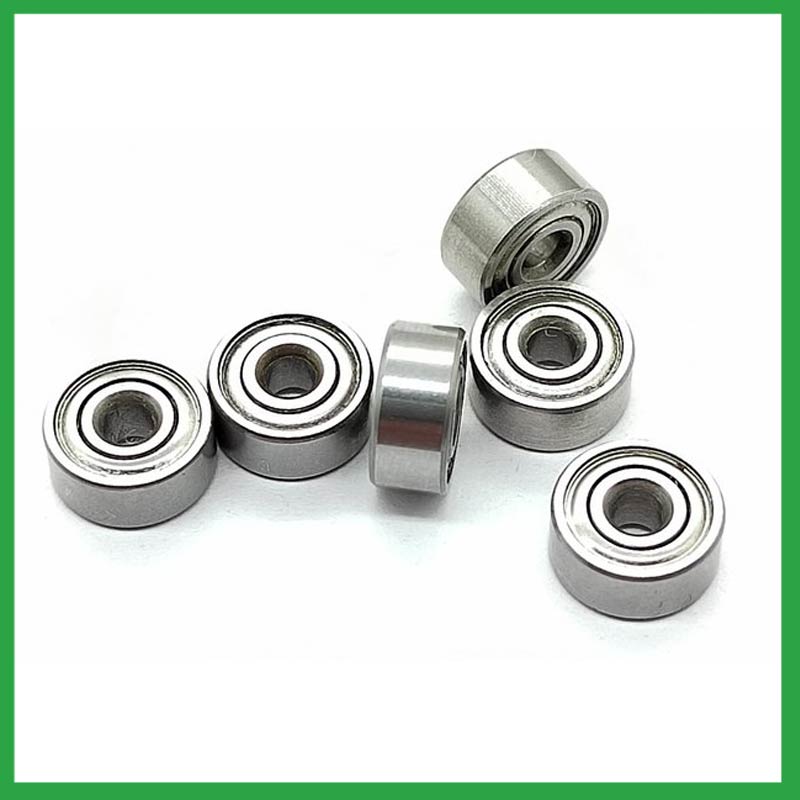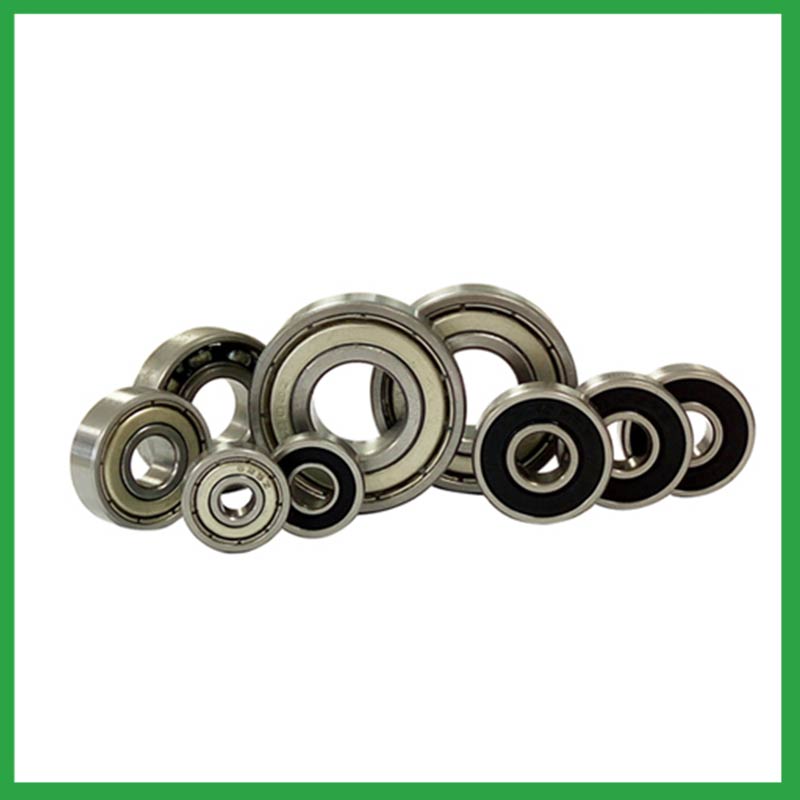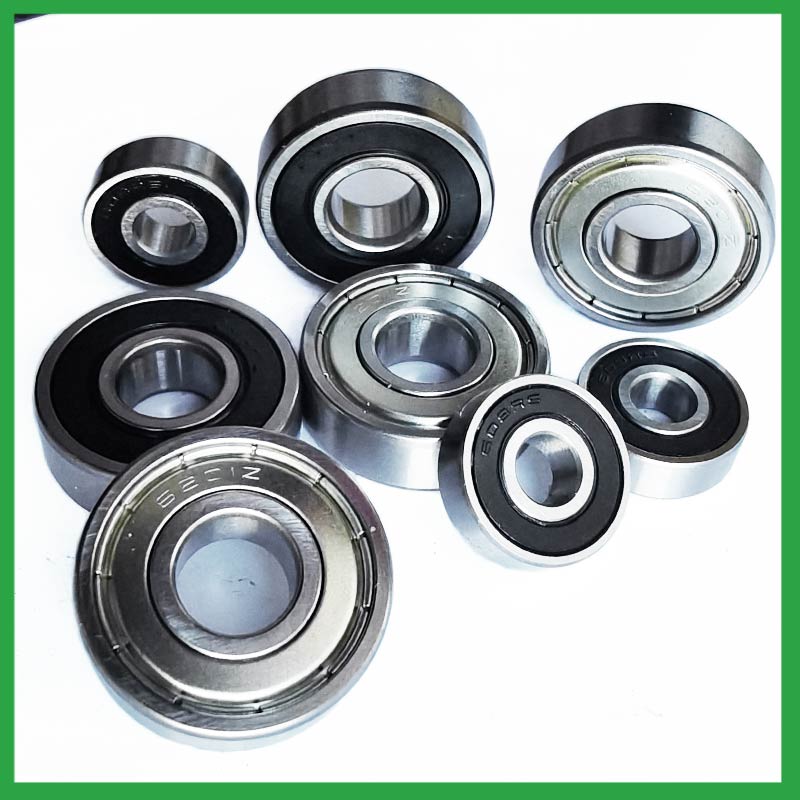PRODUCTS
CONTACT US
Ningbo Nide International Co., Ltd.
一一
· Contact person:Jack Zeng
· Mob/Whatspp/WeChat:0086-13738869026
· Email:emarketing@nide-group.com;marketing4@nide-group.com
· Add:No. 169, Wohushan Road, Daqi Subdistrict, Beilun District, Ningbo, China

Nide team could manufacture ball bearing as per customer’s drawing and samples.
If customer only has samples, we could also design drawing fo r our customer.
We also provide customized service.
Our ball bearing is widely applied the different industrials.
Ningbo Haishu Nide International is a leading bearing manufacturing and trading company committed to providing high-quality and reliable bearing products and excellent services to global customers. Product scope: We offer fan,commutator,carbon brush,ball bearing,motor cover and lamination,magnet,insulation paper, etc. We also offer customized bearing solutions to meet specific customer requirements and applications. Quality control: We attach great importance to product quality, adhere to international standards and strict quality control processes. Our production facilities are equipped with the most advanced equipment and technology, and our bearings undergo strict testing and inspection to ensure they meet the highest quality standards.
We have obtained ISO9001 certification to ensure consistent quality throughout the entire product line. We strive to ship on time and flexibly process orders to ensure a seamless experience for our esteemed customers. As an international trading company, we cater to global customers. Our products are exported to various countries and regions, and we have established strong partnerships with reliable international logistics companies.

| Parameter | Information |
| Product Name | ball joint bearing |
| Brand Name | Nide |
| Place of Origin | Ningbo,Zhejiang,China |
| Type | Ball |
| Material | ceramics, etc. |
| Sample | Avaible |
| Warranty | 3months-1year |
| Lubrication | Dry/ Oil |
| Application | textile machinery,various industrial equipment, etc. |
| Port | Ningbo/Shanghai |
| Size(mm) | customize |
| Export Country | Argentina,Brazil,South Korea,Christmas Island,French Guiana,Austria,New Zealand,Cameroon...etc |
| Export region | America,Europe,Oceania... |
| Certification | ISO 9001 Certification,CE-insulation paper inserting machine,CE-stator coil forming machine,etc |
| Precision Rating | as per customer's requirement |
| Feature | Good wear resistance,High precision...etc |
| Packaging Details | Suitable for sea transportation |
| Color | gray+customized |
| Seals Type | Rubber seals |
| Service | Prompt Delivery |
| Supply Ability | 100000-500000 Piece/Pieces per Month |
| Lead time (days) | 15-20 (To be negotiated) |
Please note: The above table data is for reference only. For specific information, please contact us.
ball joint bearing can be used in household appliances, such as refrigerator door leaf wings,vegetable cutters,mixers,upper and lower pressure rods, etc; It can also be used in industrial fields, such as weaving machine spindle bearings,reducers,weighing machines,dishwashers, etc.
During the disassembly process, the outer shell should be kept intact to avoid unnecessary damage;
When replacing installation components, attention should be paid to the accuracy of the support components to prevent deformation;
During the disassembly process, attention should be paid to protecting the surface quality of the ball bearing to ensure its performance;
During the operation, attention should be paid to removing surface dust to ensure the quality of the ball bearing.
Ball bearings have many advantages, making them highly competitive in the market.
Firstly, they are very durable and have good wear performance, making their service life longer than many other types of bearings.
Secondly, they are easy to install and can provide low friction performance in various applications.
Thirdly, they require a relatively low level of maintenance, making them cost-effective.
In addition, compared to many other types of bearings, their purchase cost is relatively low, making them an economical choice.




ball joint bearing---FAQs Guide
2.What are the common materials used in ball joint bearing manufacturing?
3.Can ball joint bearing operate in high-temperature environments like industrial ovens or furnaces, and how are they protected from heat-related damage?
4.Are there hybrid ball joint bearing that combine steel rings with ceramic balls to optimize performance in demanding applications?
5.Are there self-aligning ball joint bearing that accommodate misalignment and shaft deflection in rotating equipment?
6.What are the advancements and innovations in ball joint bearing technology that have emerged in recent years?
7.Do ball joint bearing come in various tolerance classes?
8.What is the production capacity of the factory for ball joint bearing?
9.What are the considerations for choosing between open, shielded, or sealed ball joint bearing in specific applications?
10.About ball joint bearing,Can I add my own logo?
11.Are there specific ball joint bearing designed for applications in the aerospace and aviation industries, and what standards do they adhere to?
12.How do cage designs affect ball joint bearing speed and acceleration capabilities in high-speed machinery?
13.As a ball joint bearing manufacturer,How Can We Guarantee Quality?
1.Where can ball joint bearing be used?
ball joint bearing are very versatile. They can be designed to withstand radial loads, axial loads and combined radial/axial loads at various operating speeds. These characteristics, combined with the relative cost and compactness of the design, give it universal appeal within the industry. Ball bearings are widely used in electric motors, gear reducers and pumps. Serving the automotive, home appliances, aerospace, oil and gas drilling, and mining sectors.
2.What are the common materials used in ball joint bearing manufacturing?
Most ball joint bearing are made of a type of steel known as high carbon chromium steel, often called chrome steel. This is used for reasons of cost and durability. Bearings are also made from other materials such as stainless steel, ceramics and plastic.
3.Can ball joint bearing operate in high-temperature environments like industrial ovens or furnaces, and how are they protected from heat-related damage?
ball joint bearing are capable of working at temperatures up to +842°F (+450 °C). Special lubricants, seals and coatings make this possible by protecting the ball bearings from heat damage.
4.Are there hybrid ball joint bearing that combine steel rings with ceramic balls to optimize performance in demanding applications?
Hybrid Ceramic ball joint bearing. Ceramic ball bearings (also known as hybrid bearings) are the one component that'll easily optimize the performance of your application. Hybrid bearings have ceramic (silicon nitride, Si3N4) balls and 52100 bearing steel rings.

5.Are there self-aligning ball joint bearing that accommodate misalignment and shaft deflection in rotating equipment?
These ball joint bearing are particularly suitable for applications where misalignment can arise from errors in mounting or shaft deflection. A variety of designs are available with cylindrical and taper bores, with seals and adapter sleeves and extended inner rings.
6.What are the advancements and innovations in ball joint bearing technology that have emerged in recent years?
Significant advancements have been made in ball joint bearing steels over the years. Modern, ultra-clean bearing steels contain fewer and smaller non-metallic particles, giving ball bearings greater resistance to contact fatigue.
7.Do ball joint bearing come in various tolerance classes?
Bearing tolerances are standardized by classifying bearings into the following six classes (accuracy in tolerances becomes higher in the order described): 0, 6X, 6, 5, 4 and 2.
8.What is the production capacity of the factory for ball joint bearing?
The production capacity of Ningbo Haishu Nide International is:50000000pcs/month

9.What are the considerations for choosing between open, shielded, or sealed ball joint bearing in specific applications?
While sealed bearings offer superior protection and maintenance advantages, shielded ball joint bearing can be more suitable in situations where minimal friction and operating temperature are crucial. It's essential to assess the operational environment and demands before making a selection.
10.About ball joint bearing,Can I add my own logo?
Yes, you can add your logo on bearings and packing box. We supply OEM SERVICE including bearing's size, logo, packing, etc.
11.Are there specific ball joint bearing designed for applications in the aerospace and aviation industries, and what standards do they adhere to?
Airframe control ball joint bearing are specialized bearings tailored for aircraft structures, particularly control systems and surfaces. Designed for low-speed oscillatory applications, they offer precision and support, effectively managing misalignments and flight-induced stresses.
Airframe Control bearings are lightweight, corrosion-resistant, grease-lubricated, and are sealed on most occasions. They come in precision grades for running accuracy.
12.How do cage designs affect ball joint bearing speed and acceleration capabilities in high-speed machinery?
In high-speed ball joint bearing, external load has a great effect on cage stability and sliding ratio, especially for the bearings at work in the starting process. The cage stability is worse in the beginning of the bearing starting process. The axial load greatly influences cage dynamic performance in the bearing starting process.
In addition, while ball bearings worked under steady conditions, axial load and radial load both have a great influence on cage dynamic performance. The effects of axial load on cage dynamic performance during the bearing starting process are opposite from the effects under steady conditions.

13.As a ball joint bearing manufacturer,How Can We Guarantee Quality?
Always a Pre-production Sample Before Mass Production;Always Final Inspection Before Shipment.

